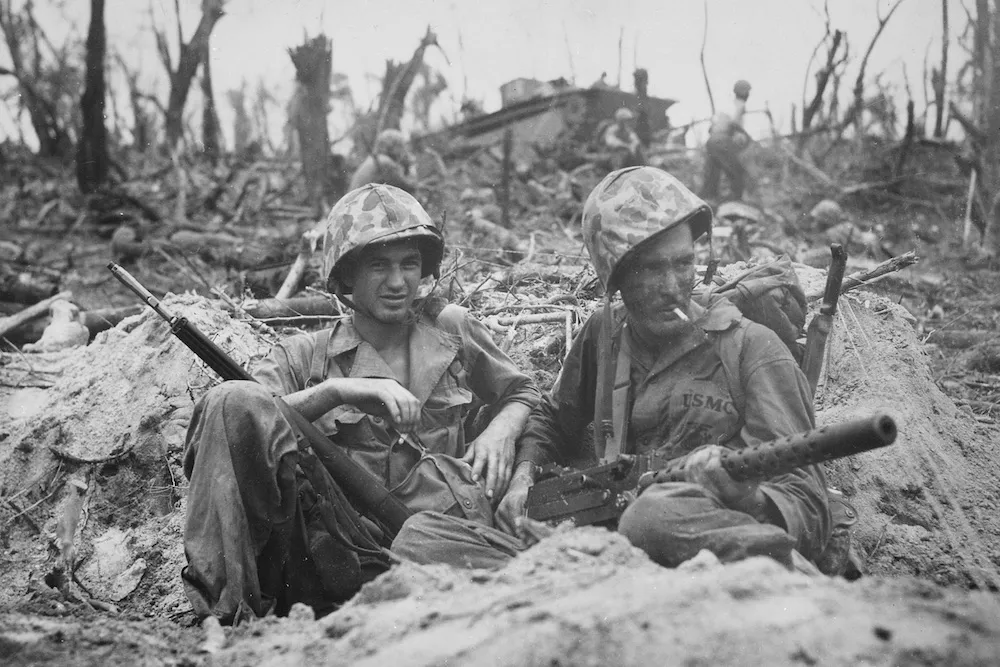James White is a WWII Marine Veteran, NRA Instructor, Former ORA President, and Distinguished Marksman. He served the ORA for many years and began the Sharpshooter. These writings are from the Sharpshooter archives and his personal collection.
Can cigarettes be bad for your health? Perhaps. The Three-On-A-Match superstition began during the Boer War early in the Twentieth Century. Supposedly, one British soldier could light up a cigarette at night with impunity. A second soldier could use that same lighted lucifer match to light his smoke. But when another soldier was the third man to use the same match, a Boer sniper had time to get his Mauser in position and aim at the flame. In that case cigarettes were definitely harmful to health. And yet there is evidence, as you’ll see, that cigarettes might make you live longer.
In the Marine Corps in World War II, everything seemed always to be done alphabetically. We were paid in alphabetic order. We received inoculations, issues of clothing, even got assignments to rifle companies according to alphabetic order.
Dick Whitaker and I were bunk mates at Camp LeJeune, North Carolina. When names are put in alphabetic sequence, Whitaker precedes White. After we went overseas, Dick Whitaker was put in F Company while I became a member of G Company, both companies being in the 29th Marines of the 6th Marine Division.
When we landed on the island of Okinawa, things seemed to cease being done in alphabetic order. Apparently, the Japanese didn’t know much about our alphabet. Whitaker or White would be shot at just as quickly as someone named Abbot or Baker.
On Okinawa, Dick Whitaker’s F Company assaulted a hill called Sugar Loaf. They weren’t on that hill very long before most members of F Company became casualties. After they had carried their wounded off of Sugar Loaf, no one from F Company was left alive on the hill.
After they came off of Sugar Loaf Hill, Dick Whitaker and a buddy dug in. In those days, as it always has, the Marine Corps had an “Attack” philosophy, so a fighting hole, or foxhole, was a temporary emplacement and was usually no more than a foot to a foot-and-a-half deep, with the dirt from the hole piled around the hole to give it a little more depth. The size of a foxhole was about six or seven feet long and with a three to four foot width, about like a shallow grave. Entrenching tools (hereinafter called “ETs”) were used to dig foxholes. An ET was a small folding shovel, whose stout sheet metal blade could be folded down to fit in a pouch fastened to the top flap of the haversack, as our back packs were called.
The foot-and-a-half long wooden handle of the ET hung down the back. The blade of an ET could be locked at a right angle to be used as a pick or to chop roots; or the blade could be locked in a fully extended position to dig holes and shovel dirt.
After their foxhole was finished, Dick Whitaker’s buddy was lying on his back on the bottom of the hole. Dick was sitting on the bottom of the hole with his back leaning against the wooden handle of his ET. Dick’s buddy put a cigarette between his lips and started to light it. Dick got a cigarette out of a package, grasped the handle of his ET with his left hand and leaned down to get a light from his buddy. Just as Dick leaned down, a Japanese sniper’s bullet struck dead center in the wooden handle of the ET and wounded Dick’s left hand.
Dick Whitaker has analyzed that sequence of events many times over the years and has always reached the same conclusion. If he hadn’t leaned down for a light for his cigarette just when he did, that sniper’s bullet would have hit at about the third button of his dungaree jacket. Dick’s cigarette smoking habit had extended his life.



